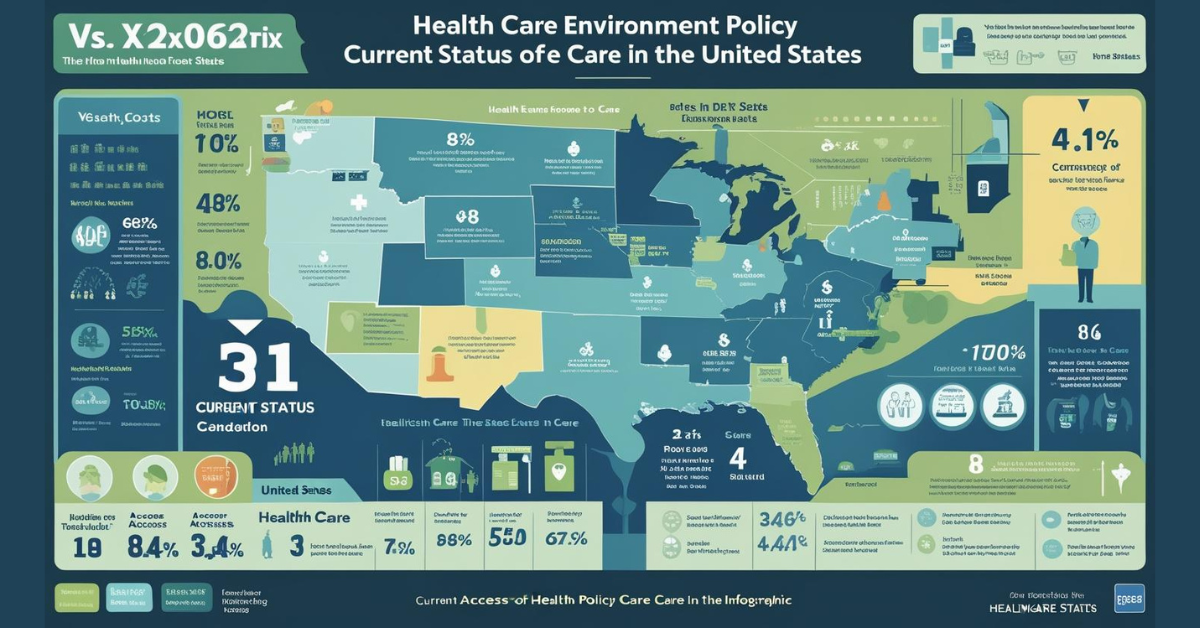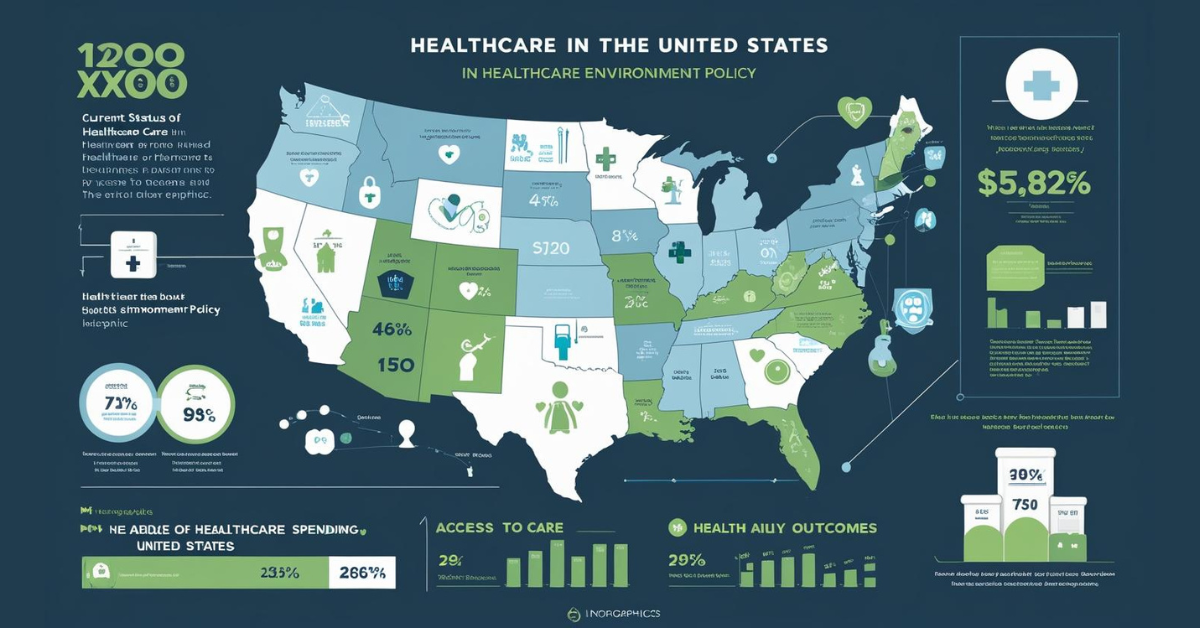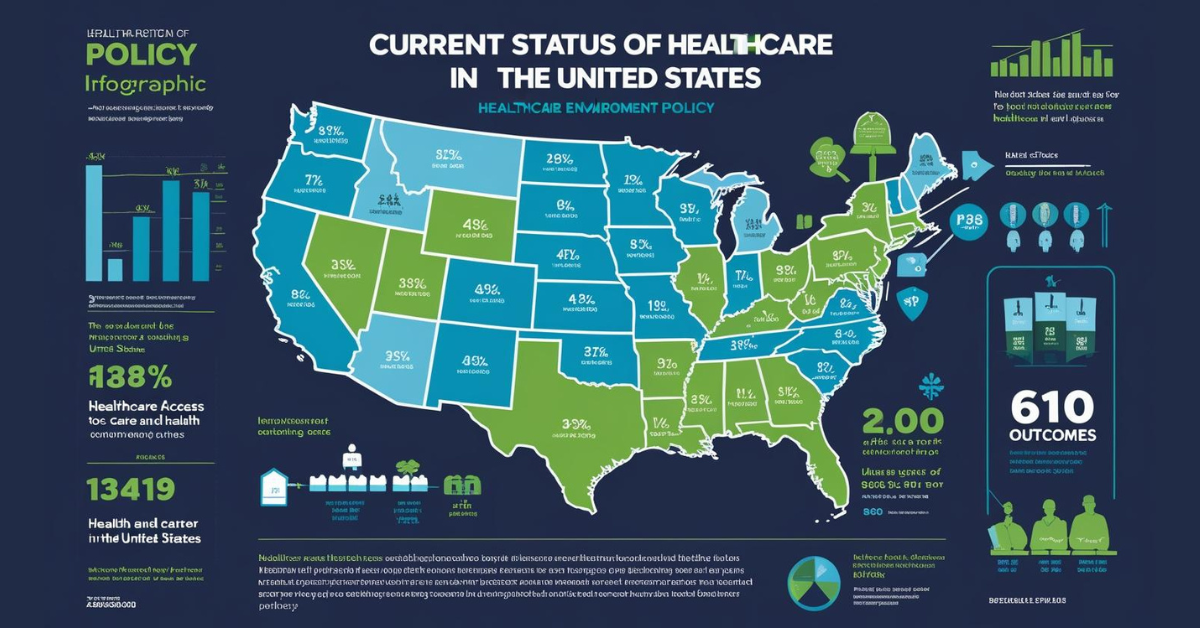The Health Care Environment Policy Current Status of Health Care in The United States. Health care in the United States is largely provided by private institutions and financed through a combination of public programs, private insurance, and out-of-pocket payments.
The Health Care Environment Policy Current Status of Health Care in The United States
The U.S. healthcare system is complex and mixed, characterized by both private and public financing and delivery of health services. While it lacks universal coverage, it is financed through employer-based health insurance, individual markets, government programs such as Medicare and Medicaid, and out-of-pocket payments. Despite high spending, the United States has relatively poor health care delivery compared to other industrialized countries. The healthcare sector itself contributes significantly to greenhouse gas emissions, and healthcare systems face the challenge of adapting to climate change.
Overall, ROE indicators of health status show that the health of the U.S. population is improving over time, although racial and ethnic disparities persist. Furthermore, life expectancy in the United States is lower and infant mortality is higher than in many other industrialized countries.
The current US healthcare environment is a complex system characterized by a mix of public and private insurance coverage, with high costs and varying levels of access. While the Affordable Care Act (ACA) has expanded coverage, a significant portion of the population remains uninsured, and healthcare spending continues to rise. Environmental concerns, including the industry’s carbon footprint, are also gaining attention.
Current Status of Health Care in The United States
Although there have been recent changes to laws intended to improve the health care system, specifically the ACA, the U.S. health-care system continues to be plagued by barriers stemming from an inability to access the system, cost of care, and quality of care provided (Davidson, 2013).
Access to Health Care
Accessibility to health care “is particularly hard to disentangle from considerations of health care quality in that it is a prerequisite to receipt of quality health care” (Docteur & Berenson, 2009, p 2). Health-care quality in the United States appears low in comparison with other countries with regard to prevention and care of chronic conditions. Access barriers experienced by the uninsured (those without health-care insurance coverage) and underinsured (those who have insurance cover age but lack adequate income to facilitate access to care because of high deductibles and co-payments) likely contribute to decreased health-care quality (Docteur & Berenson, 2009).
There are primarily two avenues through which health care can be accessed in the United States. The first is through a physician or care provider practice or clinic, and the other is through a hospital emergency department. Provider practices and clinics are generally not required to accept patients with the inability to pay for services provided. Emergency departments, conversely, are subject to the Emergency Medical Treatment and Labor Act (EMTALA) that requires that “all Medicare participating hospitals with emergency departments provide stabilizing emergency care for all patients seeking help (including patients in labor), regardless of their insurance status or ability to pay” (La Couture, 2015, p. 1).
Often this results in what is considered inappropriate use of the emergency department. In many cases, extended wait times and delays in transfer of patients to inpatient beds result in low patient satisfaction. Developing accurate models of emergency department service completion times is a critical first step in identifying barriers to patient flow and patient wait times (Ding et al., 2010).
Nurses at all levels must understand the implications of ineffective access to the health-care system. This may manifest as a patient who is seen in the emergency department, perhaps on numerous occasions secondary to lack of insurance. This situation may translate into an inability to access more affordable care by a primary care provider. Traditionally, nurses have not concerned themselves with how a patient pays for services rendered because, in theory, care is provided to each patient in the same manner regardless of ability to pay.
Often, however, these patients are labeled as noncompliant, and caring for them in a busy emergency department can be stressful when more urgent needs are evident. This situation is grossly unfair to these patients and does affect how they are treated in the emergency department. Further, labeling and treating patients in this manner violate provision one of the American Nurses Association (ANA) Code of Ethics for Nurses With Interpretive Statements (2015), “The nurse practices with compassion and respect for the inherent dignity, worth, and unique attributes of every person” (p. 1).
The same can be said for patients admitted to the hospital repeatedly for the same condition. Nurses should consider whether this occurs as a consequence of inadequate access or inability to afford medications for their condition. Nurse leaders and managers set the vision for nursing practice in the delivery of safe and quality nursing care. To that end, nurse leaders and managers must have effective communication and relationship-building skills, according to the American Organization of Nurse Executives (AONE, 2015a & AONE, 2015b).
These skills would manifest in nurses’ ability to influence behavior by asserting their views in a nonthreatening, nonjudgmental way and inspiring desired behaviors, while also managing undesired behaviors. Nurse leaders and managers must also fully investigate barriers within the system that increase wait times and decrease patient flow in the emergency department and transfer to an inpatient bed.
Considerations should include acceptable time frames for patients’ discharge, staffing barriers preventing notification of housekeeping staff to prepare the room once the patient is discharged, admission timing from the emergency department to the inpatient bed, and adequate staffing of all personnel to facilitate these processes. Nurse leaders and managers must work to eliminate these barriers to ensure that care is safe, timely, efficient, equitable, evidence-based, and patient centered.
Read More:
https://nurseseducator.com/didactic-and-dialectic-teaching-rationale-for-team-based-learning/
https://nurseseducator.com/high-fidelity-simulation-use-in-nursing-education/
First NCLEX Exam Center In Pakistan From Lahore (Mall of Lahore) to the Global Nursing
Categories of Journals: W, X, Y and Z Category Journal In Nursing Education
AI in Healthcare Content Creation: A Double-Edged Sword and Scary
Social Links:
https://www.facebook.com/nurseseducator/
https://www.instagram.com/nurseseducator/
https://www.pinterest.com/NursesEducator/
https://www.linkedin.com/in/nurseseducator/
https://www.researchgate.net/profile/Afza-Lal-Din
https://scholar.google.com/citations?hl=en&user=F0XY9vQAAAAJ


